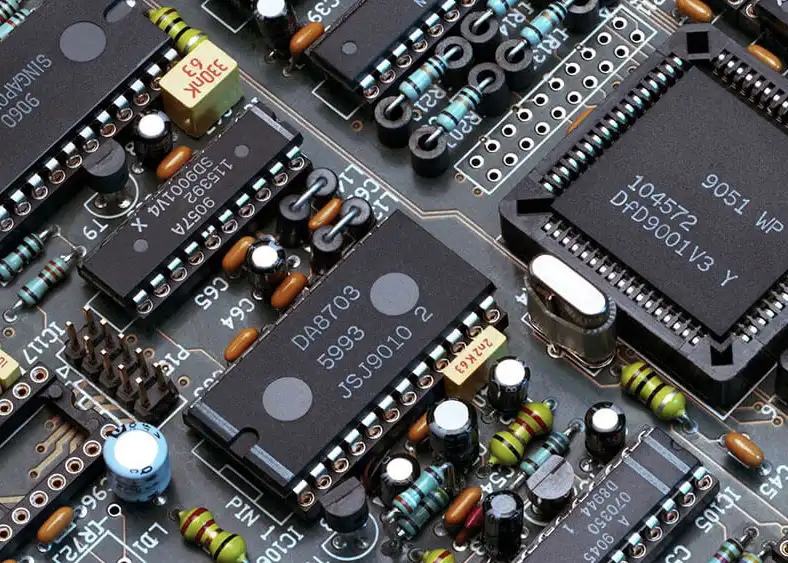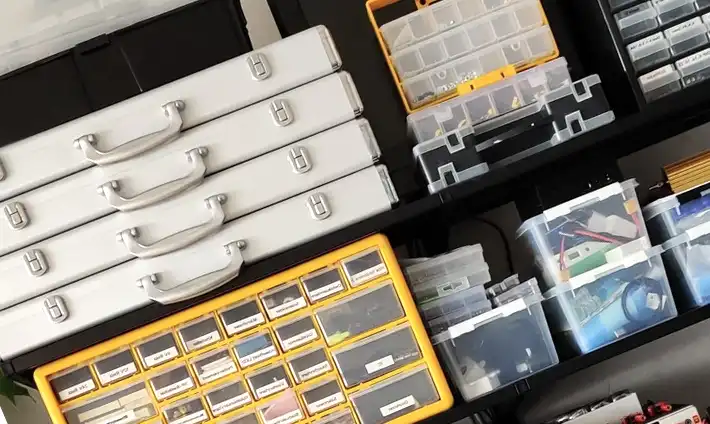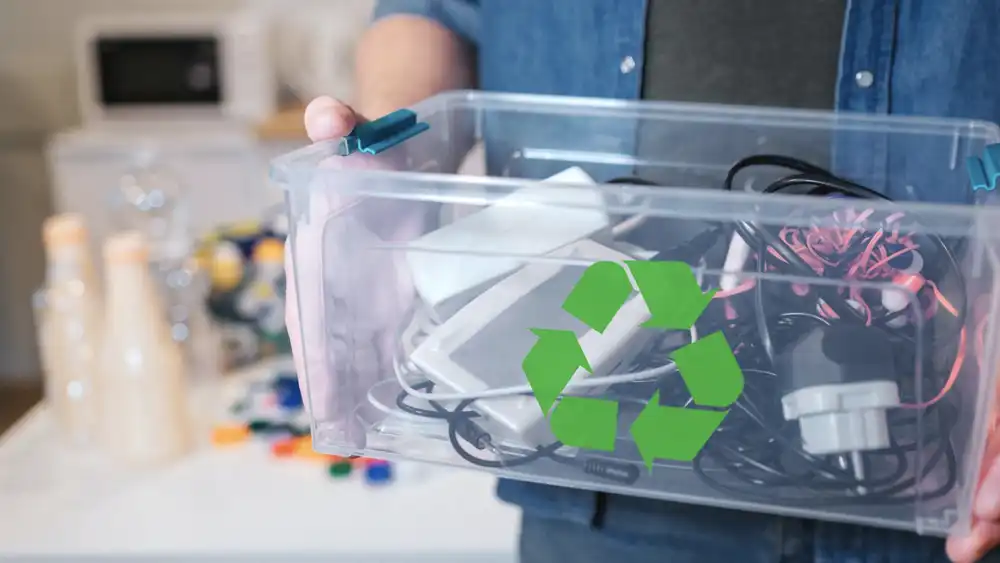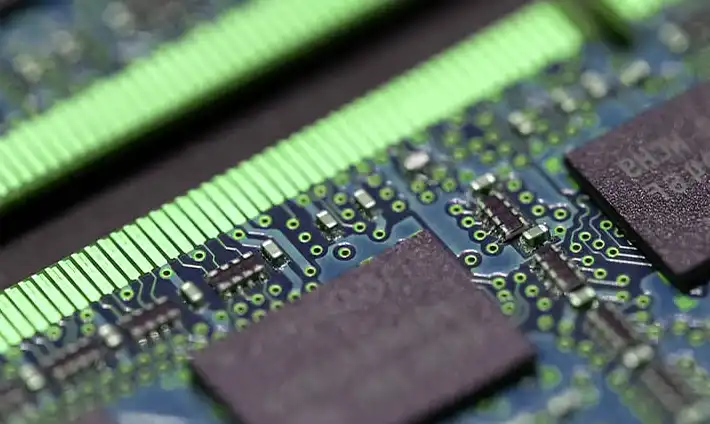Salvaging electronic components is not only an eco-friendly practice but also a cost-effective way to acquire components for your DIY projects or repairs.
Whether you’re a seasoned hobbyist or a novice tinkerer, mastering the art of salvaging electronics can save you both time and money.
In this comprehensive guide, we’ll delve into the intricacies of salvaging electronic components, providing you with valuable tips and techniques to make the process smooth and efficient.
Basics of Electronic Components

Salvaging electronic components begins with understanding the basic building blocks of electronic devices. From resistors and capacitors to transistors and integrated circuits, each component plays a crucial role in the functionality of electronic devices. By familiarizing yourself with these components, you’ll be better equipped to identify and salvage them from old electronics.
Tools of the Trade
Salvaging electronic components requires the use of specific tools designed to facilitate the disassembly and retrieval of components from electronic devices.
Here’s a closer look at some essential tools needed for successful salvage operations:
Soldering Iron:
A soldering iron is a handheld tool used to melt solder and join electronic components together. When salvaging components, a soldering iron is indispensable for desoldering components from circuit boards or soldered connections.
Desoldering Pump (Solder Sucker):
A desoldering pump, also known as a solder sucker, is used to remove excess solder from joints and connections. This tool is essential for cleanly removing components from circuit boards without causing damage.
Multimeter:
A multimeter is a versatile testing device used to measure voltage, current, and resistance in electronic circuits. When salvaging components, a multimeter is invaluable for testing the functionality of salvaged components before incorporating them into new projects.
Magnifying Glass or Loupe:
A magnifying glass or loupe is useful for inspecting small components and solder joints with greater detail. This tool helps identify component markings, solder bridges, and other details that may be difficult to see with the naked eye.
Tweezers:
Tweezers are precision tools used for handling small electronic components during salvage operations. They allow for precise placement and manipulation of components without causing damage or mishandling.
Pliers and Cutters:
Pliers and wire cutters are essential for removing screws, cutting wires, and bending metal components during disassembly. Having a variety of pliers, such as needle-nose and diagonal-cutting pliers, ensures versatility in tackling different salvage tasks.
Anti-Static Wrist Strap:
An anti-static wrist strap is worn to prevent the buildup and discharge of static electricity, which can damage sensitive electronic components. When working with static-sensitive components or circuitry, wearing an anti-static wrist strap is crucial for protecting components from electrostatic discharge (ESD).
Heat-Resistant Gloves:
Heat-resistant gloves provide protection against burns when working with hot components or soldering irons. These gloves are particularly useful during desoldering operations, where components may become hot and pose a risk of burns if handled improperly.
Locating Salvageable Electronics
The section on “Locating Salvageable Electronics” focuses on guiding readers on where to find suitable sources of electronics that can be salvaged for components. Here’s a more detailed explanation:
Thrift Stores:
Thrift stores are excellent places to find a wide variety of used electronics at affordable prices. These stores often carry a range of items, including old computers, audio equipment, and appliances, which can provide a treasure trove of salvageable components.
Electronic Recycling Centers:
Electronic component recycling centers are dedicated facilities where individuals can drop off their old electronics for proper disposal or recycling. These centers often accept a wide range of electronic devices, from smartphones and laptops to TVs and printers. Salvagers can often find discarded electronics here, ready to be salvaged for reusable components.
Online Marketplaces:
Online marketplaces such as eBay, Craigslist, and Facebook Marketplace offer a convenient platform for buying and selling used electronics. Salvagers can browse listings for electronics being sold at discounted prices or even find items being given away for free. These platforms provide access to a vast array of electronics, making it easy to find suitable candidates for salvage.
Networking and Electronics Swap Meets:
Networking with fellow hobbyists and attending electronics swap meets or maker fairs can provide unique opportunities to acquire salvageable electronics. These events bring together enthusiasts who are often willing to trade or share their surplus electronics. By connecting with others in the DIY electronics community, salvagers can expand their network and gain access to rare or specialized components.
Disassembly Techniques
1. Disassembly Process:
- When disassembling electronic devices, it’s important to proceed methodically and carefully. Start by identifying the external screws holding the device together and use the appropriate screwdriver to remove them. Keep track of the location and type of screws to aid in reassembly later.
- Once the screws are removed, carefully pry apart the casing using plastic spudgers or pry tools to avoid damaging the device or its components. Work your way around the edges of the casing, gently separating it until it can be fully removed.
- Take note of any connectors or ribbon cables attached to the casing, as these will need to be disconnected before fully separating the device. Use caution when disconnecting cables to avoid damaging the connectors or cables themselves.
2. Documentation:
- As you disassemble the device, take photos or videos at each stage of the process. These visual references can be invaluable during reassembly, helping you remember the placement of components and connectors.
- Additionally, consider labeling or organizing the disassembled components to keep track of their origin and orientation. This will make it easier to identify and reuse components later on.
3. Component Extraction:
- Once the device is fully disassembled, you can begin extracting the individual components for salvage. Use a combination of hand tools, such as pliers or tweezers, to carefully remove components from the circuit board or housing.
- Pay close attention to the condition of the components as you extract them. Avoid applying excessive force or bending components, as this can lead to damage or deformation.
4. Handling Sensitive Components:
- Some electronic components, such as integrated circuits (ICs) or surface-mount devices (SMDs), may be more delicate and require special handling. Use caution when handling these components to avoid bending or damaging their leads or pins.
- Consider using anti-static precautions, such as wearing an anti-static wrist strap or working on an anti-static mat, to protect sensitive components from electrostatic discharge (ESD) damage.
By following these disassembly techniques, you can safely and effectively extract components from electronic devices for salvage. Taking a methodical approach and exercising caution will help preserve the integrity of the components and maximize their usability in future projects.
Identifying and Testing Components
Identifying and testing components are crucial steps in the process of salvaging electronic components effectively. Let’s delve deeper into each of these steps:
Identifying Components:
When salvaging electronic components, it’s essential to accurately identify each component to ensure its proper use in future projects. Here are some methods for identifying salvaged components:
- Datasheets: Many electronic components come with datasheets that provide detailed information about their specifications, such as voltage ratings, capacitance values, and pin configurations. By referencing datasheets, you can quickly identify components based on their part numbers or markings.
- Component Markings: Most electronic components are marked with codes, symbols, or alphanumeric characters that indicate their value, tolerance, and manufacturer. These markings may be printed directly on the component or etched onto its surface. By deciphering these markings, you can determine the type and specifications of the component.
- Online Resources: The internet is a treasure trove of information for identifying electronic components. Various websites, forums, and databases specialize in cataloging and identifying electronic components based on their markings or physical characteristics. Online communities of electronics enthusiasts often provide valuable insights and assistance in component identification.
- Physical Characteristics: In some cases, you can identify components based on their physical appearance and characteristics. For example, resistors are typically cylindrical or rectangular in shape, while capacitors may have cylindrical or box-like structures. By familiarizing yourself with the physical attributes of common electronic components, you can make educated guesses about their type and value.
- Comparison with Known Components: If you have access to similar components with known specifications, you can compare them visually or electrically to identify salvaged components. By matching physical dimensions, color codes, or electrical characteristics, you can confirm the identity of salvaged components with a higher degree of certainty.
Testing Electronic Components:
Once you’ve identified salvaged components, it’s essential to test them for functionality and reliability before incorporating them into your projects. Here’s how you can test salvaged components:
- Multimeter Testing: A multimeter is a versatile tool that can measure various electrical parameters such as voltage, resistance, and continuity. By using different measurement modes, you can test the functionality of resistors, capacitors, diodes, transistors, and other components. For example, you can use the resistance measurement mode to check the resistance value of resistors or the capacitance measurement mode to check the capacitance value of capacitors.
- Component Tester: Specialized component testers are available for testing specific types of electronic components, such as capacitors, diodes, and transistors. These testers often provide quick and accurate results, making them ideal for testing salvaged components in bulk. Component testers typically feature built-in test circuits and display screens that indicate the component’s type and parameters.
- Functional Testing: In addition to electrical testing, it’s essential to verify the functional integrity of salvaged components in real-world applications. For example, you can test a salvaged relay by applying a control signal and observing its switching behavior. Similarly, you can test salvaged LEDs by applying a power source and verifying their illumination.
- Visual Inspection: Visual inspection is another crucial aspect of component testing, especially for components with physical damage or wear. Inspect salvaged components for signs of corrosion, physical damage, or overheating, as these issues can affect their performance and reliability. Discard any components that show visible signs of damage or deterioration.
Proper Storage and Organization

When it comes to salvaging electronic components, proper storage and organization are crucial aspects that shouldn’t be overlooked. Here’s a deeper dive into why these steps are essential and how to execute them effectively:
Preventing Damage: Electronic components are often delicate and sensitive to environmental factors like moisture and static electricity. Improper storage can lead to damage or degradation of components, rendering them unusable. By storing components in labeled containers or organizers, you can protect them from dust, moisture, and physical damage, ensuring their longevity and functionality.
Facilitating Accessibility: An organized storage system makes it easy to locate specific components when needed. By categorizing components based on type, value, or function and labeling storage containers accordingly, you can streamline the retrieval process and avoid wasting time searching for elusive parts. This accessibility ensures efficiency during project planning and execution, saving you both time and frustration.
Preventing Loss: Salvaging electronic components often involves accumulating a diverse array of parts over time. Without proper organization, components can easily get misplaced or lost, leading to unnecessary duplication or delays in project completion. By maintaining a well-organized inventory and adhering to a systematic storage system, you can minimize the risk of component loss and maximize the utility of your salvaged parts.
Protecting Against Static Electricity: Static electricity poses a significant risk to sensitive electronic components, potentially causing damage through electrostatic discharge (ESD). To mitigate this risk, consider storing components in anti-static bags or containers and using anti-static mats or wrist straps when handling components. These precautions help dissipate static charges and safeguard components against ESD-related damage, ensuring their integrity and reliability.
Maximizing Space Utilization: Efficient use of storage space is essential, especially when dealing with large quantities of salvaged components. Utilizing storage solutions such as stackable bins, drawer organizers, or compartmentalized trays can help maximize space utilization while keeping components easily accessible. Additionally, implementing a hierarchical storage system based on frequency of use or component priority can further optimize space efficiency and organization.
Creative Reuse and Upcycling

Creative reuse and recycling of electronic components offer endless possibilities for inventive projects. For example, rather than discarding an old circuit board from a broken electronic device, individuals can repurpose it as a unique piece of artwork or jewelry. By incorporating soldered components, LEDs, and other electronic elements, circuit boards can be transformed into eye-catching sculptures or wearable accessories.
Additionally, salvaged electronic components can be upcycled to create functional gadgets or devices. For instance, old resistors and capacitors can be used to build custom electronic circuits for home automation or sensor projects. By combining salvaged components with new materials and technologies, hobbyists and makers can develop innovative solutions to everyday challenges.
Beyond individual projects, creative reuse and upcycling contribute to broader sustainability efforts by diverting electronic waste from landfills and reducing the consumption of new materials. By giving new life to old electronics, these practices promote a circular economy where resources are reused and repurposed rather than discarded after a single use.
Moreover, creative reuse and upcycling foster a sense of creativity, resourcefulness, and community among makers and DIY enthusiasts. By sharing ideas, techniques, and projects online and in-person, individuals inspire each other to think outside the box and explore new possibilities for salvaged materials.
How to Salvage Electronic Components

Salvaging electronic components requires patience, precision, and a keen eye for detail.
Follow these steps to salvage electronic components like a pro:
- Choose Your Source: Start by selecting a suitable electronic device for salvage. Look for devices with a variety of components and avoid heavily damaged or corroded electronics.
- Prepare Your Workspace: Set up a clean and well-lit workspace with all the necessary tools and equipment within reach. Ensure that your workspace is free from clutter and distractions to facilitate focused salvaging sessions.
- Disassemble Carefully: Take your time to disassemble the electronic device methodically, keeping track of each component’s location and orientation. Use appropriate tools such as screwdrivers, pliers, and spudgers to avoid damaging delicate components.
- Identify Components: Once the device is disassembled, carefully identify each component using datasheets, markings, or online resources. Sort the components into categories such as resistors, capacitors, and integrated circuits for easy organization.
- Test for Functionality: Before incorporating salvaged components into your projects, test them for functionality using a multimeter or component tester. Check for proper voltage, resistance, and continuity to ensure that the components are in working condition.
- Store Properly: After testing, store salvaged components in labeled containers or organizers to prevent loss or damage. Consider using anti-static bags or foam inserts for sensitive components to protect them from static electricity.
By following these steps and incorporating best practices, you can salvage electronic components effectively and unleash your creativity in electronics projects.
FAQs
Can I salvage components from damaged electronics?
Yes, you can salvage components from damaged electronics as long as the components themselves are intact and functional.
How do I test salvaged components?
You can test salvaged components using a multimeter or component tester to check for proper voltage, resistance, and continuity.
What tools do I need for electronic salvage operations?
Essential tools for electronic salvage operations include soldering irons, desoldering pumps, multimeters, and magnifying glasses.
Is salvaging electronic components environmentally friendly?
Yes, salvaging electronic components helps reduce electronic waste and promotes sustainability by extending the lifespan of electronic components.
Can salvaged components be used in DIY projects?
Salvaged components can be used in a wide range of DIY projects, from simple circuits to complex electronic gadgets.
Where can I find salvageable electronics?
Salvageable electronics can be found at thrift stores, electronic recycling centers, online marketplaces, and electronic swap meets.
Conclusion
Salvaging electronic components is not only a practical skill but also a rewarding hobby that fosters creativity and resourcefulness. By mastering the art of salvaging, you can save money, reduce electronic waste, and unlock endless possibilities for DIY electronics projects.
Remember to prioritize safety, organization, and knowledge sharing as you embark on your salvaging journey.
Finally, please feel free to contact us anytime if you are looking for electronic components.